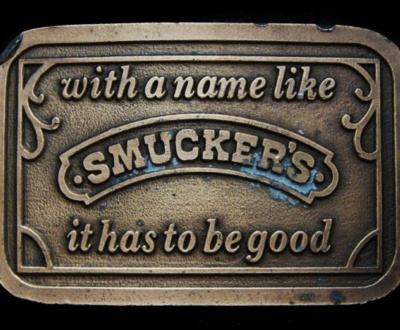Marketing Success Metrics (Part 3): Customer Lifetime Value (CLV)
- September 6, 2013
- Blog
This is the third post in our series about marketing success metrics. The first post covered Return on Marketing Investment (ROMI), which is used to measure the financial return of any money spent on marketing efforts. The second post reviewed RFM, which is used to rank and segment customer groups. This post is about another financial measurement, similar to ROMI, but that has a long-term perspective, called Customer Lifetime Value (CLV)
Customer Lifetime Value is a measurement that tells you how much each of your customers is worth, so that when you segment them you can see which groups are the most valuable over the long term and which could actually be costing you money. It also attaches a monetary value to important metrics like customer retention, so you will be able to calculate things like how much money you left on the table if you lose a customer earlier than expected.
The formula for calculating Customer Lifetime Value has four different terms:
- CR: Customer Revenue. This is how much, on average, your customer buys from you each time they come to the store.
- CC: Customer Cost. This is how much it costs your company to service this customer on average for each purchase. It should not only factor in the materials to make the product, but also any customer service or support they require.
- T: Timing. This is how many times a customer makes a purchase with you each year on average.
- Y: Years. This is the average length of time a customer will stay with your company.
Now that you know the terms, here is the formula:
CLV = (CR – CC) * T * Y
In narrative form, the formula says that CLV is the average profit that your company generates from each transaction a customer makes with you, multiplied by the number of transactions per year and the number of years that they remain a customer. This will give you a final dollar amount that tells you how much each customer will make your business on average during their time as a customer.
This formula can help you evaluate a number of aspects of your business. For example, simply increasing the number of average purchases per year, or the number of years someone remains a customer, can dramatically increase their CLV. This can help you evaluate the return on investment for different marketing efforts designed to increase customer loyalty and repeat purchases. If you happen to lose a customer, or find that a particular customer segment is stopping their relationship with you earlier than you anticipated, you can also determine exactly how much money you are losing — and therefore how much you can afford to spend to fix the problem in order to break even.
It also helps as a way to analyze different customer segments. You may actually find that some customers have a negative CLV, which means they are costing you more to serve than they are making you in revenue, and you can actively work to stop selling to those customers.
For example, lets say that you have a particular customer segment that only purchases your cheapest model from your line of technology products, which is also the one with the lowest profit margins for your company. Afterwards, they call your customer support team multiple times and require a significant amount of help — which costs your company money in terms of operating the call center and labor for the tech support team. If the cost of the support for these customers is more than the profit from the sale, then their customer lifetime value would be negative, and your business would be better off “firing” them from being your customers.
Here’s an even more complex example. In the previous situation, because the customer purchased such a low-value product, it might have been obvious to some business owners without doing a CLV calculation that, after factoring in support, they would cost the company money. But this same principle also applies to high-value products as well.
Let’s say you’re running a B2B firm, and you only sell high-end software products with a one-time price tag in the 6 figures. However in order to make this sale, it also requires highly trained technical specialists to set up customized product demos for each new prospect, as well as time from your senior leadership team to attend the pitch meetings. And even so, you only tend to land one out of every five sales. Could you also see a negative CLV, even with a product that sells for $100,000? Unfortunately, you can.
Since your sales team is an expense for landing new business, all of the work of the whole team across the 4 failed pitches, plus the last successful pitch, has to be factored into the costs when calculating CLV. So if your sales team costs $25,000 in salary and equipment for each pitch, then it costs you $125,000 to make 5 pitches, and if you only get a single $100,000 sale out of that, you would wind up negative.
The good news is that CLV also gives you an indicator where you can improve things. In the B2B example, it may mean simply pursuing fewer pitches and doing a better job of being selective about which customers you go after. This would reduce the amount of failed pitches that you give, which also decreases the cost of each new customer and increases your CLV.
You could also change your pricing structure so that instead of a $100,000, one-time payment, there is a smaller, but still substantial, up-front payment and then an ongoing maintenance fee. This allows you to capitalize on the customer’s loyalty over time, which you can then work to extend to make even more money on, instead of just charging a single up-front purchase price.
Looking at the CLV formula, before adding in the ongoing maintenance fee the values for “purchases per year” and “years as a customer” were both 1, so they didn’t add any value to the CLV. This made it strictly a profit calculation. But by charging a maintenance fee, all of a sudden you are adding in additional years for them to be a customer, which allows you to capitalize on a longer-term relationship to see a profitable CLV.
Now that we’ve discussed three different hard metrics, you’re ready to move on to the final post in the series: Soft Metrics!
This is author biographical info, that can be used to tell more about you, your iterests, background and experience. You can change it on Admin > Users > Your Profile > Biographical Info page."
About us and this blog
We are a digital marketing company with a focus on helping our customers achieve great results across several key areas.
Request a free quote
We offer professional SEO services that help websites increase their organic search score drastically in order to compete for the highest rankings even when it comes to highly competitive keywords.
Subscribe to our newsletter!
More from our blog
See all postsRecent Posts
- 4 Reasons You Should Be A/B Testing Your Email Marketing Campaigns May 15, 2018
- The Secret Strategy for Using Surveys to Boost Conversions (It’s Not What You Think) February 2, 2017
- Advanced Brand Positioning Strategies December 31, 2016





Pingback: Marketing Success Metrics (Part 4): Soft Measurements | SEO and Reputation Management Agency